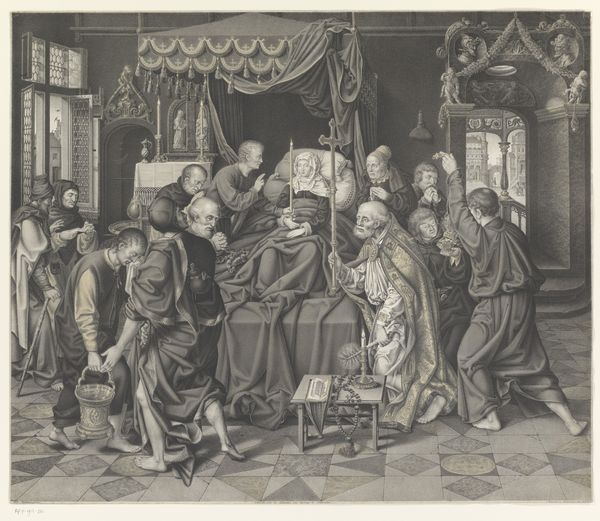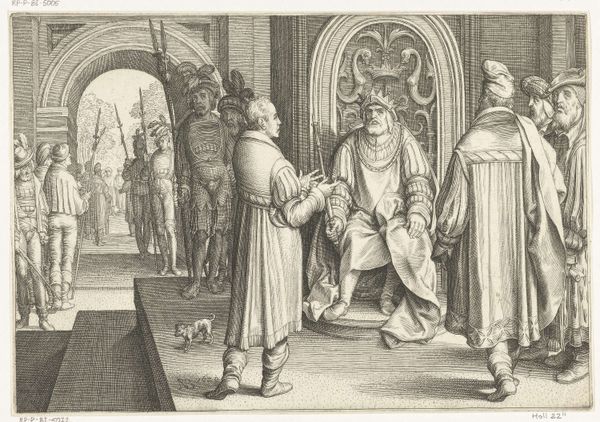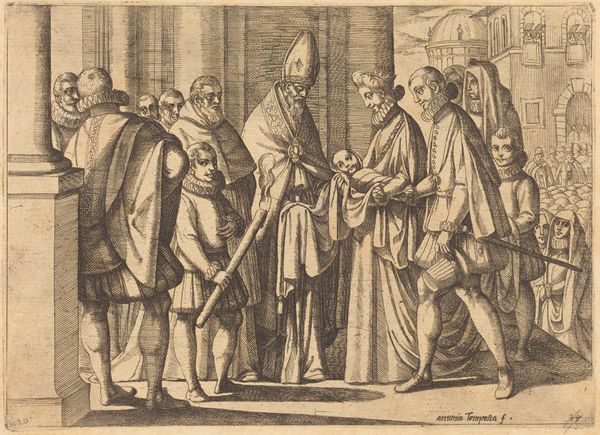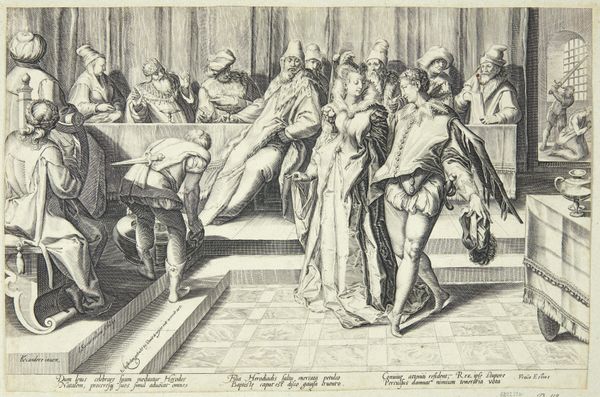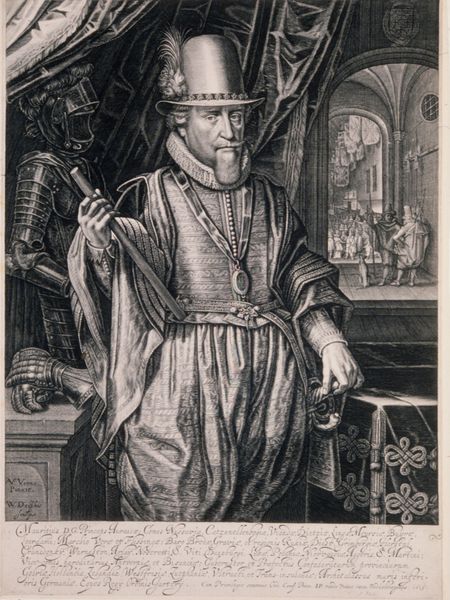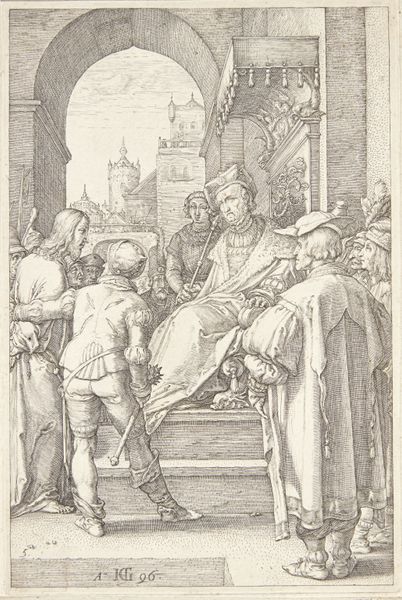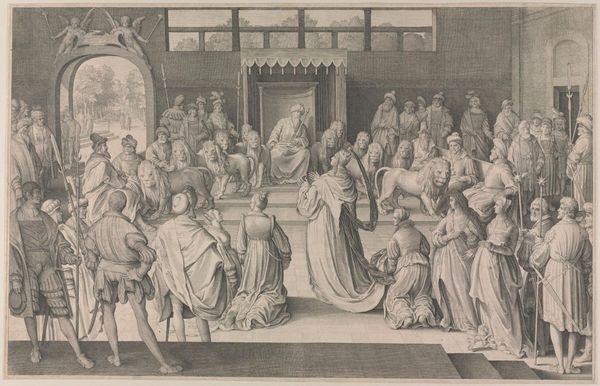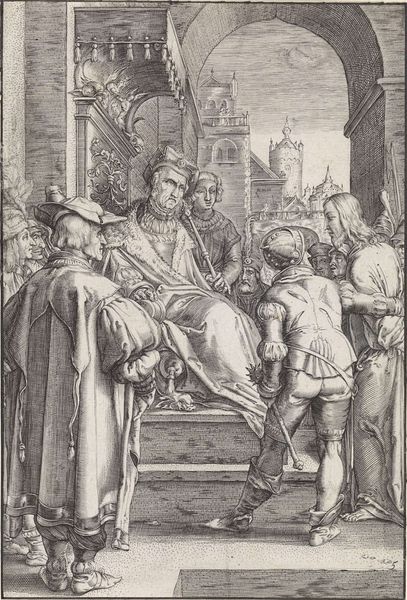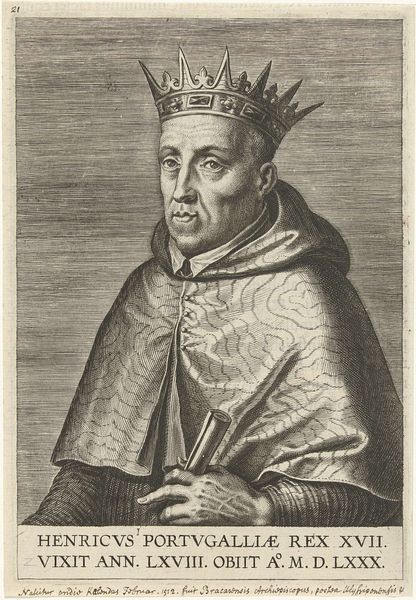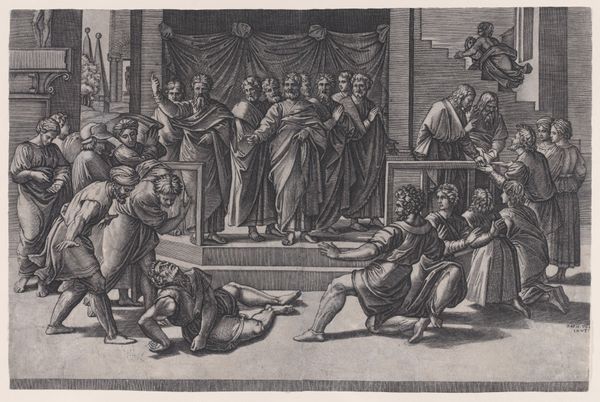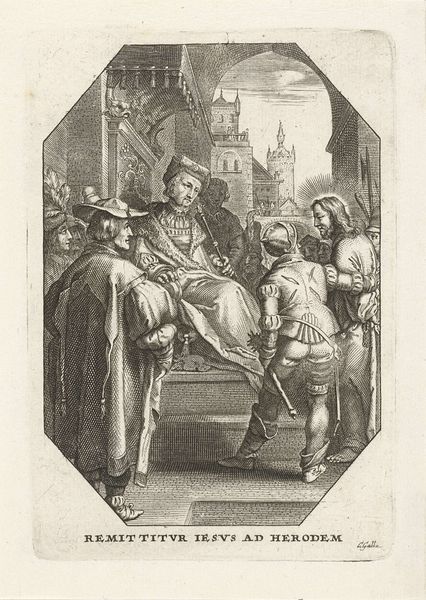
painting, oil-paint
#
figurative
#
high-renaissance
#
painting
#
oil-paint
#
figuration
#
history-painting
#
academic-art
#
italian-renaissance
Copyright: Public Domain: Artvee
Curator: Raphael's “Portrait of Pope Leo X with Cardinals Giulio de’ Medici and Luigi de’ Rossi,” created around 1518 using oil paint, is a powerful work from the High Renaissance. Editor: It’s instantly striking. The overwhelming red, the density of figures crammed into the space—it feels almost claustrophobic. Curator: The redness is not just a color; it's a statement of power, a visual representation of the papacy. The robes, the table covering, even the caps—all in that vibrant hue, highlighting authority, but also sacrifice. The symbolism is potent. Think of the connotations of blood, ritual, and high status. Editor: And Leo's gaze…it feels very studied, perhaps even burdened. It's a sharp contrast to the softness and luxury of the textures that surround him. What power dynamics do you see at play? Curator: This was a period rife with political tensions and social unrest. Looking at it through a contemporary lens, this portrait raises questions about institutional power, its sustainability, and the image it projects. Consider the ways Leo X responded to the stirrings of the Reformation, and then consider the display of wealth in the portrait. It's contradictory. Editor: The symbols feel meticulously chosen, right down to the illuminated manuscript and the magnifying glass he holds. Almost as if the symbolism of his faith wasn’t enough—every detail is symbolic of influence. Curator: Precisely. It’s a tableau of controlled symbolism. Even the presence of the two cardinals—Medici, his cousin, and de’ Rossi, his nephew—suggests an intentional consolidation of power within the family. It reinforces an insular structure. Editor: Seeing them grouped so closely brings out a contrast, highlighting themes of authority, legacy, and perhaps the pressures of leadership during the Renaissance, as papal authority started being openly contested. Curator: Yes, and understanding the socio-political context of the Reformation enriches how we view Leo’s gaze and those sumptuous materials. Editor: Indeed. Thanks, as always, for clarifying my first, somewhat simplistic read. Curator: It’s what makes engaging with art continuously rewarding—there's always a deeper reading waiting to be uncovered.
Comments
No comments
Be the first to comment and join the conversation on the ultimate creative platform.
